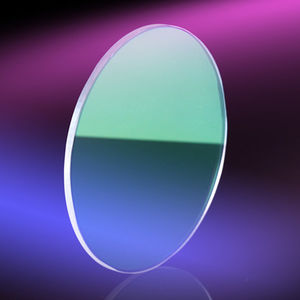When manufacturing filters, we not only use conventional physical vapor deposition (PVD) multilayer coating, but also combine precise packaging technology to ensure environmental stability, and use plasma assisted deposition technology to produce “hard” coating, which has incomparable durability in harsh conditions and sputtering coating to produce more advanced filter solutions.
We also provide electron beam evaporation technology of various materials for manufacturing special thin film coatings.
Physical vapor deposition (PVD)
Plasma assisted deposition technology
Electron beam evaporation (for special thin film coatings, such as gold, aluminum and various compounds)
Optical coating technology
The “surface treatment” of thin film optical coating is a treatment designed to modify the characteristics of the supporting surface in a specified way. Therefore, the deposition of the coating begins on the surface. Although the coating can be expected to have a series of different properties, including environmental, thermal, chemical, and even acoustic properties, the main purpose is usually a set of required specular optical properties, which will change the quality of the light manipulated by the surface, but keep its direction unchanged. For such coatings, the surface must be optically smooth. In other words, the size of deviation from perfection should be several orders of magnitude smaller than the wavelength of light. Let’s assume this is the case. Then, our coating consists of one or more layers of the selected material, which together show the required performance, usually combining the interference with the inherent performance of the material. Sometimes, the material itself can be changed from its natural state by modifying its microstructure.
The force to fix the film together and attach it to its surface is in a short range from one atom to another. These forces are very strong, but the range of action is very short, so the single molecular layer of pollutants can completely block the bond. Therefore, not only the smoothness of the surface is very important, but also the cleanliness is more important.
Many methods have been used or have been used for the deposition of optical coatings, so we cannot provide a complete list. One of the earliest possibilities was to make mirrors by pouring molten lead onto glass in the later Roman Empire. Sufficient lead attached to the glass can greatly improve its reflectivity, but the glass is easy to break under this treatment, so the mirror is small and irregular in shape. An improved technology originated in the 15th century is tin amalgam coating, which, together with the great improvement in the quality of flat glass, makes it possible to produce essentially modern mirrors. Electroless silver plating was developed in the middle of the 19th century. Until the 1930s, it has been the priority technology of the front surface mirror. At the same time, great progress has been made in the photography process, and finally Lipmann lotion has been achieved. It was actually a thin film interference filter when it was developed. In the 19th century, the glass surface was also artificially polished to reduce its reflectivity. However, in addition to the mirror coating on the front surface, there is almost no demand for optical coating. Until the beginning of the 20th century, the increasingly complex optical instruments and systems required to improve the surface performance, especially to reduce the reflectivity and greatly increase the transmittance as a way to eliminate glare and ghost. Vacuum deposition is usually adopted as the preferred process. By the middle of the 20th century, the field of optical coating had developed rapidly. Many things have happened in optics, but the emergence of laser is probably the most important event. Laser needs coating. In the second half of the 20th century, the unprecedented development in the field of optics led to optical coating, which continues to develop in the 21st century.
Nowadays, vacuum deposition is still the main process for producing optical coatings. But although thermal evaporation has been the main process for many years, we now see more alternative vacuum processes, even some processes that do not rely on vacuum.




